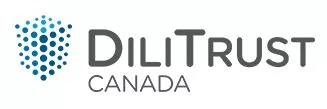In this three-part Environmental Social Governance (ESG) series, we look at the origins of ESG, recent regulatory announcements, new emerging standards and how to prepare your organization for the future of public reporting.
The term ESG may be trending in 2022 but the concept of measuring, disclosing and analysing companies' environmental, social and governance performance has been in development for decades.
ESG performance criteria provides insights into how much consideration corporate leadership has given to the environmental, social and governance risks and opportunities connected to operations. The process of preparing a company for a public ESG report can help identify missing policies and processes, but also new waste reduction, stakeholder engagement and innovation opportunities.
ESG encompasses a wide range of issues but most commonly:
- Environmental criteria: greenhouse gas emissions, waste generation, water security, climate change risk strategy
- Social criteria: employee and supplier diversity, socioeconomic impact in the community, pay equality, worker health, safety and human rights
- Governance criteria: transparency, policy development, independence of the board of directors, diversity, anti-bribery & corruption measures, tax practices, and executive compensation
WHAT ARE THE ORIGINS OF ESG?
Traditional economists viewed environmental, social and ethical concerns as externalities and therefore not financially material to a company's performance but in the 80s and the 90s that began to shift. Numerous public safety revelations, human rights abuses, and environmental disasters attributed to corporate operations, not only devalued companies but also forced society to look at business impacts differently. A shareholder centric view of a corporation's responsibilities became inadequate for managing the full scope of risks.
Further prompted by calls from civil society to increase transparency and social responsibility, companies began to engage a more inclusive group of stakeholders and communicate their corporate social responsibility progress. Reporting frameworks like the Global Reporting Initiative (GRI) G1 Standard first published in 2000, helped companies qualify and quantify impacts for stakeholders. This practice of voluntary annual public reporting became the baseline for all future corporate reporting.
The United Nations Environment Programme Finance Initiative (UNEP FI) used the acronym ESG in 2004 to describe their work on sustainable finance with banks, insurers and investors and the concept has been in development ever since. Multi-stakeholder consortiums have continued to quietly build and refine public disclosure frameworks that provide the transparency society asks of a modern corporation and the consistency the financial sector has requested of environmental, social and governance claims. The Sustainability Accounting Standards Board (SASB), founded in 2011, created a financial materiality map of ESG indicators by sector that established credibility within the generally accepted accounting principles. The financial materiality of ESG was further supported by the creation of the Task Force on Climate-related Financial Disclosures (TCFD) in 2015, whose climate risk disclosure guidance has now become part of mainstream finance.
ESG RIGHT NOW
There have been several significant ESG announcements in the first half of 2022, including:
- International Sustainability Standards Board (ISSB) proposed unified disclosure standards for capital markets.
- Global Reporting Initiative (GRI) announced a collaboration with ISSB; aligning the multi-stakeholder disclosure framework already used by thousands of publicly traded companies.
- Canadian Federal Budget 2022 included an announcement that mandatory climate-related reporting is planned for federally regulated financial institutions.
- S. Security and Exchange Commission (SEC) proposed rules to standardize climate disclosures for investors.
Investor-focused capital market standards and multi-stakeholder sustainability standards are aligning, and North American regulators are beginning to mandate ESG disclosure for financial institutions. Although this may not impact your company today, this does signal a demand for increased transparency around ESG risks to your business and it is expected to create climate disclosure requirements for financial institutions' customers and suppliers.
With oversight from the board of directors, general counsel and senior leadership have an opportunity to make your organization more resilient and manage a broad set of issues proactively. Companies that put the committees, policies and processes in place to manage ESG performance have an opportunity to go beyond compliance and make this a strategic advantage.
By embedding environmental and social value into your culture and prioritizing ESG as a centre of excellence, you will learn from the insights, inspire employees and be in a better position to differentiate your organization. Every company has an opportunity to contribute to a just, sustainable future, but leadership is essential to building an impactful ESG practice.
BY: Steven Fish, Independent Esg Advisor
In part 2 of this 3-part ESG series, we will talk about organizational leadership, engaging your teams and creating value for all stakeholders.
The content of this article is intended to provide a general guide to the subject matter. Specialist advice should be sought about your specific circumstances.


